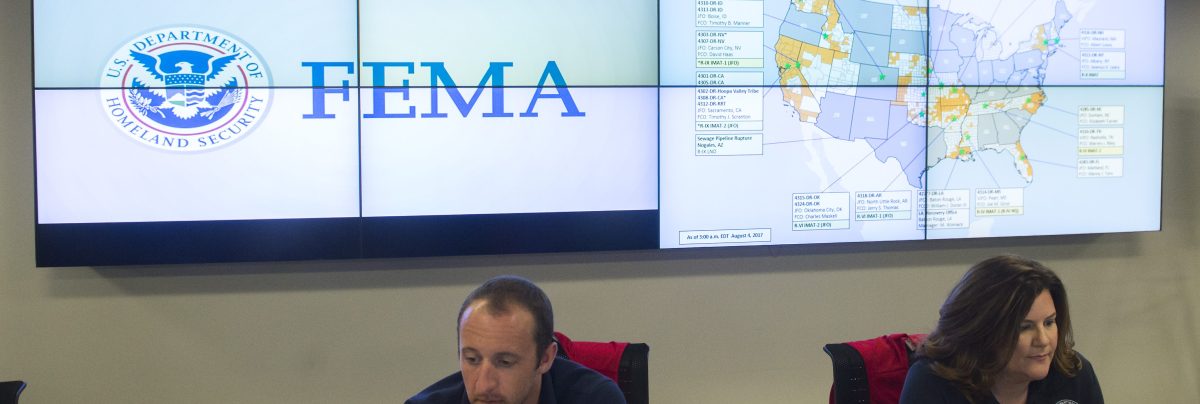It remains to be seen how well FEMA will be seen as having handled the devastation in Texas left in the aftermath of Hurricane Harvey. But the federal agency has had a stormy history in crisis management since its formation in the 1970s.
In fact, the Federal Emergency Management Agency was originally meant to run bunkers meant to protect government officials in case of nuclear attack has been shifted towards a mandate of mobilizing the government response to major disasters.
And now a major profile from Wired shows why the agency has been as chaotic ever since its predecessor, the Federal Civil Defense Administration, was founded by President Harry Truman in 1950 with little functional authority.
After some name changes, the agency was reorganized into FEMA under the Carter administration to provide a “continuity of government” under a potential nuclear war. The scope of that mission was largely classified at the time, with its public face focused on natural disasters.
The extent of FEMA’s secret facilities weren’t revealed until after the Cold War ended, but the agency struggled to adapt after all that planning was no longer necessary.
“Peacetime operations didn’t come naturally to FEMA. For the Cold War, it had created special mobile command centers, known as Mobile Emergency Response Support (MERS) units—eventually building some 300 special vehicles and stationing them across the country at its regional facilities,” writes Wired‘s Garrett Graff.
“It tried to repurpose them for natural disasters. Following Hurricane Andrew in 1992, FEMA dispatched MERS units to help the residents of hard-hit Homestead, Florida, but found the vehicles were too high-tech to be of much use—the souped-up tractor-trailers could communicate on encrypted channels with military forces around the world but lacked the basic hand-held radios and telephones necessary to communicate with first responders down the street.”
It evolved over the next decade to be better prepared to mobilize help for natural disasters, but ironically a man-made crisis changed everything. In the wake of the 9/11 attacks, the agency was moved under the Office of Homeland Security, later the Department of Homeland Security. Now having to slot in a very bureaucratic hierarchy prompted then-FEMA head, Joe Allbaugh, to warn that it would cost FEMA the ability to react quickly and decisively.
That became very apparent in August 2005 when Hurricane Katrina struck New Orleans under FEMA chief Michael Brown’s watch.
“The federal government’s response to the hurricane—combined with mistakes at the local and state government level—was an epic disaster in its own right,” writes Graff. “It triggered the strongest indictment of governmental incompetence of the 21st century.”
This article appeared in an InsideHook newsletter. Sign up for free to get more on travel, wellness, style, drinking, and culture.

























